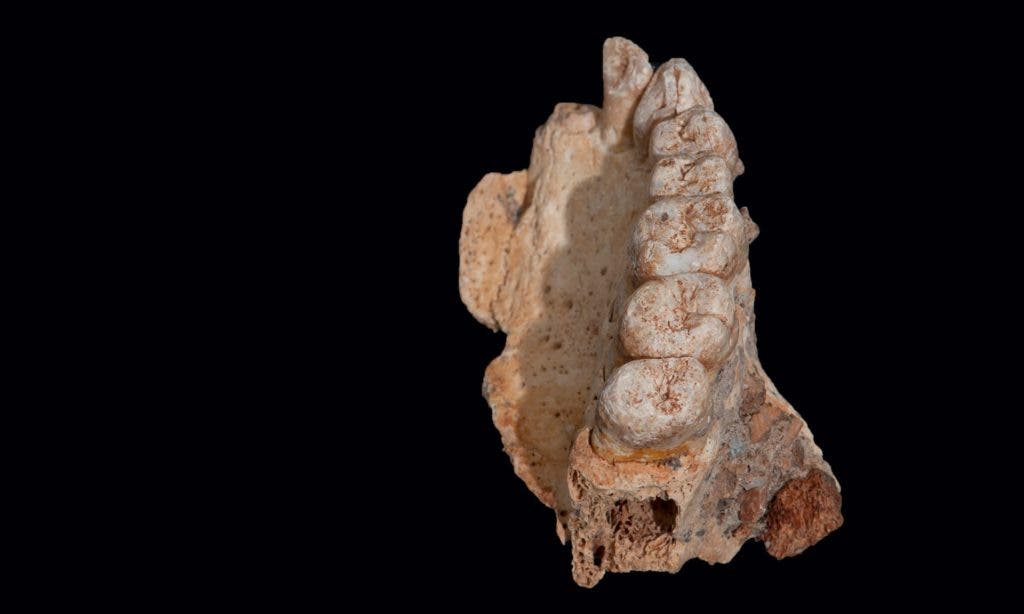Our species first evolved in Africa and then dispersed to Europe and Asia not in one massive exodus, but likely in multiple waves of migration over the last 200,000 years. Multiple lines of evidence collected in the past decade support this idea, the most recent of which being reported by researchers at Tel Aviv University who described a 200,000-year-old jawbone discovered in an Israeli cave. The jawbone is twice as old as any Homo sapiens fossil discovered outside of Africa.

The well-preserved upper jawbone containing eight intact teeth was found in the Misliya cave. Although the teeth are rather large compared to those of a modern human, researchers say the fossil undoubtedly belongs to a Homo sapiens, as reported in the journal Science.
Along with the jawbone, excavations revealed stone tools and blades, which were fashioned by the cave’s crafty inhabitants to hunt and butcher gazelles, wild boars, turtles, and ostrich. Even pieces of an ancient matting made from plants that Misliya dwellers used to sleep on was found amongst the artifacts and fossils.
Radiocarbon analysis of both the fossil and tools suggests these are between 177,000 and 194,000 years old.
Up until recently, scientists used to think humans left Africa for Euroasia barely 60,000 years ago, where they quickly outclassed contemporary relatives like Neanderthals and Denisovans. But the evidence from recent years puts this singular ‘Out of Africa’ theory into question. For instance, there’s a trove of 100,000-year-old human teeth found in a cave in China, thousands of miles away from humanity’s cradle in Africa. Other similar findings were made in southeast Asia and even as far as Australia dated to 60,000 years ago. If humans had barely begun to exit Africa 60,000 years ago, how can we explain these other findings?
Now, Misliya breaks the mold of the classical theory when Homo sapiens first left Africa, suggesting that humans left the continent whenever the climate allowed it — or, conversely, when the climate forced them out. Prof. Israel Hershkovitz, who led the work at Tel Aviv University, thinks that humans came in and out of Africa frequently over the last couple hundred thousand years. The Misliya cave and others like it in present-day Israel were like “train stations” that exploring humans used on their way through Europe and Asia.
After settling Europe, modern humans out-competed Neanderthals into extinction, but not before interbreeding with them 50,000 years ago. To this day, all non-sub-Saharan humans carry 1-4 percent Neanderthal DNA. However, a recent DNA analysis of a Neanderthal leg bone discovered in a German cave suggests that interbreeding between the two species could have occurred as early as 200,000 years ago. Such a finding, peculiar as it seemed at first, now makes sense in light of the ancient Misliya jawbone.
It’s exciting to hear about such early excursions of our ancestors. Those must have been truly exciting times, but also very frightening and dangerous.
Our genes don’t lie, and according to population genetics studies, most modern-day populations outside Africa can trace their roots to a group that dispersed around 60,000 ago. It follows that earlier groups contributed very little, if anything, to our current lineage — most likely because they could not survive — to be fair, the odds weren’t really in their favor. It’s amazing, though, that after all this time, we can still piece together some of the long-lost history of our species’ most epic journey.


